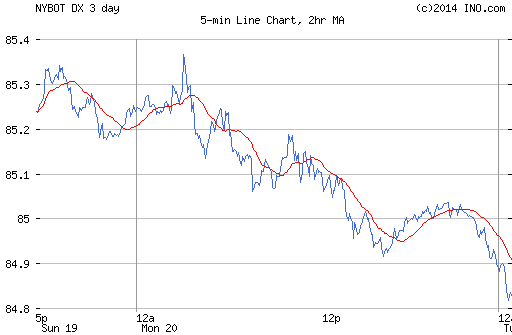You Should Buy Timber Stocks and Watch Your Money Grow On Trees (NYSEArca CUT NASDAQ WOOD NYSE
Post on: 16 Март, 2015 No Comment

Have you ever wondered how billionaires continue to get RICHER, while the rest of the world is struggling?
I study billionaires for a living. To be more specific, I study how these investors generate such huge and consistent profits in the stock markets — year-in and year-out.
CLICK HERE to get your Free E-Book, “The Little Black Book Of Billionaires Secrets”
Timber beats stocks and bonds. Managed timber has actually beaten the stock market with less risk over the long run. From 1987-2010, managed timber returned roughly 14% annually, according to The Campbell Group , a timber investment advisor. Meanwhile, the Standard & Poors 500 Index returned about 9% and bonds clocked in at a little less than 7%. Even better, the returns on timber have been less volatile.
Timber is uncorrelated to stocks and bonds. The Timberland Index maintained by the National Council of Real Estate Investment Fiduciaries (NCREIF) shows timber price movements have a very low correlation with other asset classes.
Timber does especially well in bear markets. During the Great Depression timber was up 233% while the price of stocks fell more than 70%. In fact, during the three worst market downturns of the 20th century (1911-20, 1929-41, and 1966-81), timber outperformed the S&P 500 by a wide margin.
Timber whips inflation. Timber prices have grown at a rate that is approximately 3% greater than inflation for the last century. During Americas last major inflationary period from 1973 to 1981, when inflation averaged 9.2% timberland values increased by an average of 22% per year, according to Money Morning timber investing research.
Timber Stocks: Real Growth You Can Count On
And while timberlands function like low cost warehouses, they also serve as profit-spinning factories.
Thats because timber literally grows on trees.
Most timber-grade trees grow an average of 8% per year — which means that every year you dont cut them down, theyre worth about 8% more. So while the stock market gyrates, timber keeps growing on the stump and increasing in value year after year.
Thats real growth you can count on. And while we cant say for sure what will happen with the world economy. we can safely say that trees will keep growing, and timber will be in demand.
In fact, the United Nations Food and Agricultural Organization forecasts that world demand for woodwill nearly double by the middle of this century. Even paper recycling efforts have had little effect on demand.
And when it comes to being green, trees are hard to beat.
As metals and plastics are spewed out by smoke belching factories, wood is adding to the oxygen we breathe. Timber is renewable, recyclable, biodegradable, and produced with clean solar energy. As green awareness increases around the globe, timber becomes more attractive than ever.
All of this makes investing in timber stocks a great capital growth vehicle and a reducer of risk.
How to Invest in Timber Stocks

Up until recently, investing in woodlands had been limited to timber investment management organizations (TIMOs) that cater to pension funds and other investors with deep pockets.
But now there are public companies available as investment vehicles for the retail investor. Here a few ways to invest:
Plum Creek Timber Co. Inc. (NYSE:PCL) has a market capitalization around $6.4 billion and nearly 8 million acres of timberland (all in the U.S.) and is focused primarily on owning and managing timberland, although it also sells plywood and wood chips. It is 66% owned by mutual funds. As a Real Estate Investment Trust (REIT), Plum Creek offers an attractive 4.2% dividend yield with an extra plus. Its dividends are treated by the IRS as capital gains instead of ordinary income — another gift for timber investors.
Rayonier Inc. (NYSE:RYN), also a REIT, has a $5.6 billion market cap and manages approximately 2.4 million acres of forest in the United States and New Zealand. The company also produces performance fibers and has a subsidiary dedicated to real estate. Rayonier pays a 3.4% dividend yield, and that dividend has steadily increased.
Timber exchange-traded funds (ETFs) are a relatively new investment option. Two ETF alternatives worth looking at are Claymore/Clear Global Timber Index (NYSEArca:CUT) and iShares S&P Global Timber & Forestry Index (Nasdaq:WOOD). Both ETFs invest in timber REITs, as well as companies related to the industry: paper, packaging, etc.
So if you believe that small-cap energy and tech stocks may have better short-term prospects, youre correct. But youre not likely to find a better long term holding than timber stocks.
Related: Weyerhaeuser Company Common (NYSE:WY), Potlatch Corporation (NYSE:PCH), Meadwestvaco Corporation (NYSE:MWV), International Paper Company (NYSE:IP).
Your Guide to Financial Freedom. We’re in the midst of the greatest investing boom in almost 60 years. And rest assured – this boom is not about to end anytime soon. You see, the “flattening of the world” continues to spawn new markets worth trillions of dollars; new customers that measure in the billions; an insatiable global demand for basic resources that’s growing exponentially; and a technological revolution even in the most distant markets on the planet. And Money Morning is here to help investors profit handsomely on this seismic shift in the global economy. In fact, we believe this is where the only real fortunes will be made in the months and years to come.














